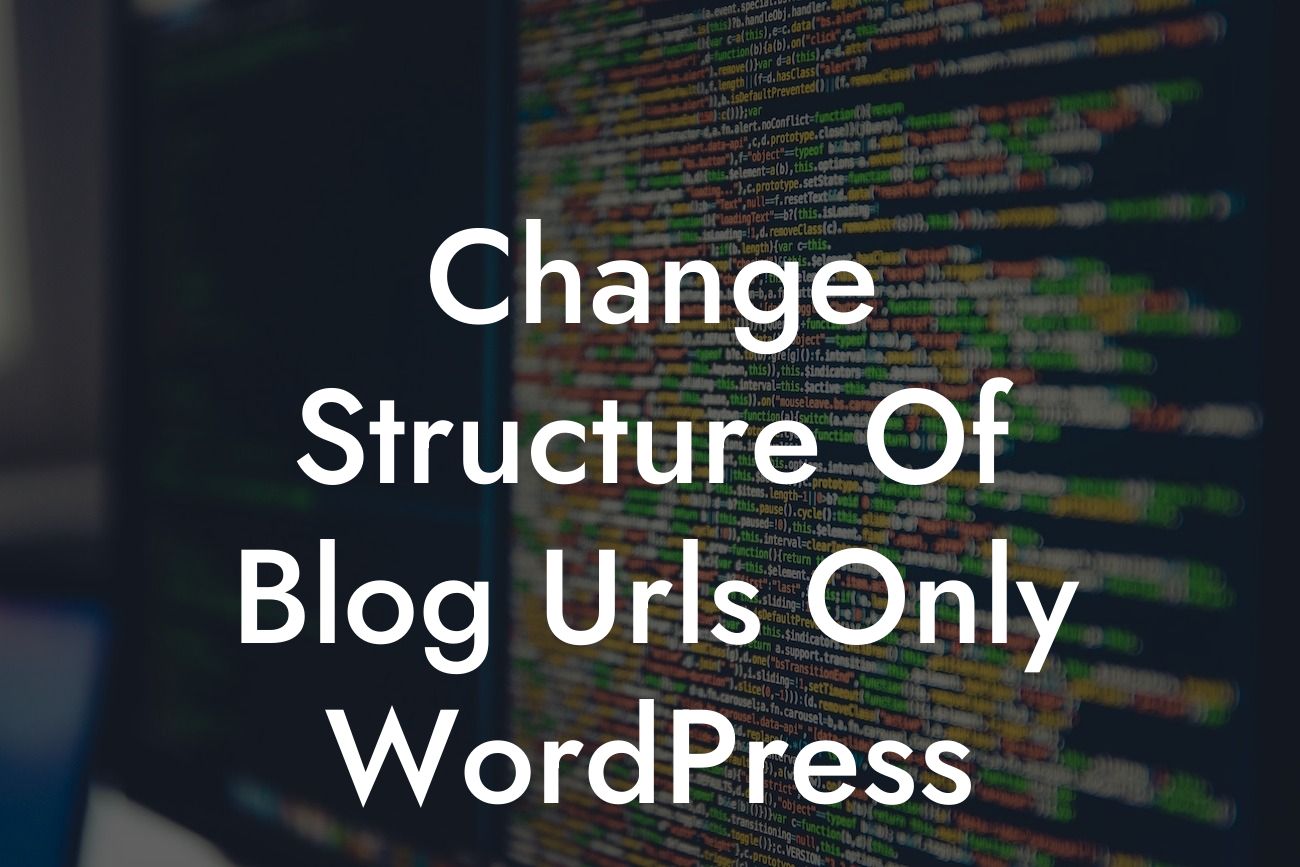Many small businesses and entrepreneurs rely on WordPress to power their websites and blogs. While WordPress offers a wide range of features and benefits, sometimes it can be a challenge to customize certain aspects of your website, such as the structure of your blog URLs. In this article, we will explore how you can change the structure of blog URLs in WordPress, allowing you to optimize your website for better search engine visibility and user experience.
Before we dive into the details, let's first understand what a blog URL structure is and why it matters. The URL structure of your blog determines how your blog post links appear in the address bar of a browser and how search engines understand and categorize your content. By default, WordPress uses a structure that includes the date and post name. However, this may not always be the most ideal structure for your website.
There are various reasons why you may want to change the structure of your blog URLs. Firstly, a clean and concise URL structure is more user-friendly, making it easier for visitors to remember and share your blog posts. Secondly, optimizing your URLs can improve your search engine rankings by making it easier for search engines to understand the relevance and context of your content.
To change the structure of your blog URLs in WordPress, follow these steps:
1. Log in to your WordPress dashboard and navigate to the "Settings" menu.
Looking For a Custom QuickBook Integration?
2. Click on "Permalinks" to access the permalink settings page.
3. You will see a list of common permalink structures. Choose the one that suits your needs or select a custom structure if you have specific requirements.
4. Customize the structure by adding relevant tags such as %postname% for the post name or %category% for the category name.
5. Save your changes, and WordPress will automatically update the structure of your blog URLs.
Remember to choose a structure that reflects the content and structure of your website. Ideally, your URLs should be descriptive, keyword-rich, and easy to read.
Change Structure Of Blog Urls Only Wordpress Example:
Let's consider a real-world example of a small business owner who wants to change the structure of their blog URLs. Sally runs a handmade soap business and wants her blog URLs to include the category name followed by the post name. By following the steps mentioned earlier, Sally can easily change her blog URL structure to something like "example.com/category/postname". This not only makes her URLs more descriptive but also helps search engines understand the topics covered in her blog posts.
Changing the structure of your blog URLs in WordPress is a simple yet powerful way to enhance your website's user experience and improve search engine visibility. By optimizing your URLs to be more descriptive and keyword-rich, you can attract more visitors and increase your chances of ranking higher in search engine results. Don't forget to explore other helpful guides on DamnWoo and try out our awesome WordPress plugins to further elevate your online presence. Share this article with others who may find it valuable and start transforming your blog URL structure today.













